- 1. Question number 1 - what program is the processor loaded?
- 2. Question number 2 - there is a CPU load, applications and processes that load - no! What to do?
- 3. Question number 3 - the cause of CPU load can be overheating and dust?
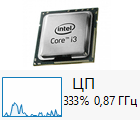 Hello.
Hello.
One of the most common reasons why the computer slows down is the CPU load, and, sometimes, incomprehensible applications and processes.
Not so long ago, on one computer, a friend had to face an “incomprehensible” CPU load, which sometimes reached 100%, although there were no programs that could download it that way (by the way, the processor was quite modern Intel inside Core i3). The problem was solved by reinstalling the system and installing new drivers (but more on that later ...).
Actually, I decided that this problem is quite popular and will be interesting to a wide range of users. The article will give recommendations, thanks to which you can independently understand why the processor is loaded, and how to reduce the load on it. So…
1. Question number 1 - what program is the processor loaded?
To find out how many percent of the processor is loaded - open the Windows Task Manager.
Buttons: Ctrl + Shift + Esc (or Ctrl + Alt + Del) .
Next, in the processes tab, all applications that are currently running should be displayed. You can sort everything by name or by the load created on the CPU and then remove the desired task.
By the way , very often the problem arises of the following plan: you worked, for example, in Adobe Photoshop, then closed the program, but it remained in the processes (or it happens all the time with some games). As a result, they “eat” resources, and not small ones. Because of this, the computer starts to slow down. Therefore, very often the first recommendation in such cases is to restart the PC (since in this case such applications will be closed), well, or go to the task manager and remove such a process.

Important! Pay special attention to suspicious processes: which heavily load the processor (more than 20%, and you have never seen such a process before). In more detail about suspicious processes was not so long ago article: https://pcpro100.info/podozritelnyie-protsessyi-kak-udalit-virus/
2. Question number 2 - there is a CPU load, applications and processes that load - no! What to do?
When setting up one of the computers, I encountered an incomprehensible CPU load - there is a load, there are no processes! The screenshot below shows what it looks like in the task manager.
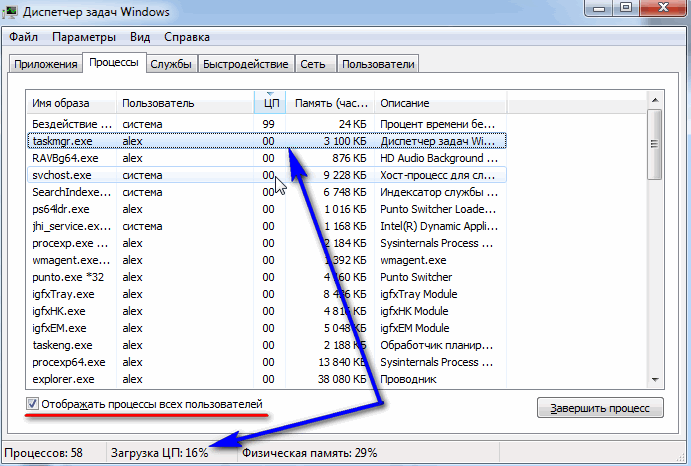
On the one hand, it’s surprising: the checkbox “Display processes of all users” is turned on, there is nothing among the processes, and the PC boot jumps 16-30%!
To see all the processes that load the PC - run the free utility Process Explorer . Next, sort all the processes by load (CPU column) and see if there are any suspicious "elements" (the task manager does not show some processes, unlike Process Explorer ).
Link to of. Process Explorer website: https://technet.microsoft.com/ru-ru/bb896653.aspx
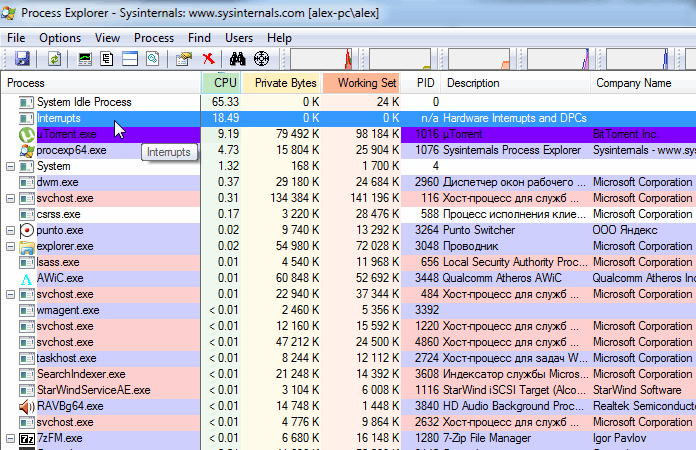
Process Explorer - load the processor on ~ 20% system interrupts (Hardware interrupts and DPCs). When everything is in order, usually, the CPU utilization associated with Hardware interrupts and DPCs does not exceed 0.5-1%.
In my case, the culprit was system interrupts (Hardware interrupts and DPCs). By the way, I can say that sometimes fixing the PC boot associated with them is quite troublesome and complicated (besides, sometimes they can load the processor not only by 30%, but by 100%!).
The fact is that the CPU is loaded because of them in several cases: driver problems; viruses; the hard disk does not operate in DMA mode, but in PIO mode; problems with peripheral equipment (for example, printer, scanner, network cards, flash and HDD drives, etc.).
1. Driver Problems
The most common cause of CPU load is system interrupts. I recommend to do the following: boot the PC in safe mode and see if there is any load on the processor: if it's not there, the reason is very high in the drivers! In general, the easiest and fastest way in this case is to reinstall Windows and then install one driver one by one and see if the CPU load has appeared (as soon as it appears, you have found the culprit).
Most often, the fault here is the network cards + universal drivers from Microsoft, which are installed immediately when installing Windows (I apologize for the tautology). I recommend to download and update all drivers from the official website of the manufacturer of your laptop / computer.
https://pcpro100.info/ustanovka-windows-7-s-fleshki/ - installing Windows 7 from a flash drive
https://pcpro100.info/kak-iskat-drayvera/ - update and search for drivers
2. Viruses
I think it’s not worth spreading, which may be due to viruses: deleting files and folders from the disk, stealing personal information, loading CPU, various advertising banners on top of the desktop, etc.
I will not say anything new here - install a modern antivirus on your PC: https://pcpro100.info/luchshie-antivirusyi-2016/
Plus, sometimes check the computer with third-party programs (which are looking for adware adware, mailware, etc.): about them in detail here .
3. Hard Disk Mode
HDD mode of operation can also affect the boot and speed of the PC. In general, if the hard disk is not operating in DMA mode, but in PIO mode, you will immediately notice this with terrible “brakes”!
How to check it? In order not to repeat, see the article: https://pcpro100.info/tormozit-zhestkiy-disk/#3__HDD_-_PIODMA
4. Problems with peripheral equipment
Disconnect everything from the laptop or PC, leave the minimum (mouse, keyboard, monitor). I also recommend to pay attention to the device manager, whether there will be installed devices with yellow or red icons in it (this means either there are no drivers, or they do not work correctly).
How to open the device manager? The easiest way is to open the Windows control panel and type the word "dispatcher" into the search box. See screenshot below.
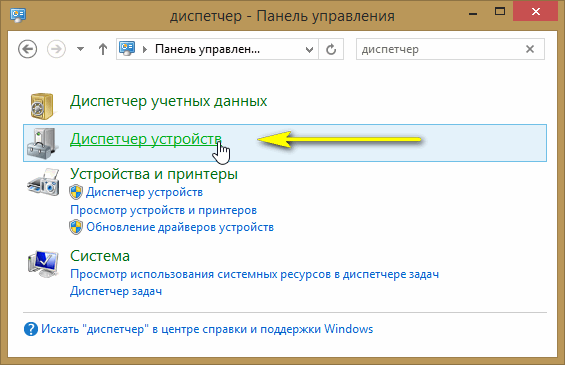
Actually, then it will only remain to view the information that the device manager will issue ...
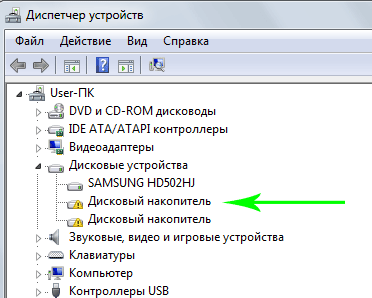
Device Manager: there are no drivers for devices (disk drives), they may not work correctly (and most likely do not work at all).
3. Question number 3 - the cause of CPU load can be overheating and dust?
The reason why the processor can be loaded and the computer starts to slow down - it may be overheating. Typically, the characteristic signs of overheating are:
- increased cooler hum: the number of revolutions per minute is growing because of this, the noise from it is getting stronger. If you had a laptop: then sweeping your hand near the left side (usually there is a hot air outlet on laptops) - you can notice how much air is blown out and how hot it is. Sometimes - the hand does not tolerate (this is not good)!
- braking and slowing down the computer (laptop);
- spontaneous reboot and shutdown;
- failure to boot with errors reporting failures in the cooling system, etc.
Find out the temperature of the processor, you can use specials. programs (about them in more detail here: https://pcpro100.info/harakteristiki-kompyutera/ ).
For example, in the AIDA 64 program, in order to see the processor temperature, you need to open the “Computer / Sensor” tab.
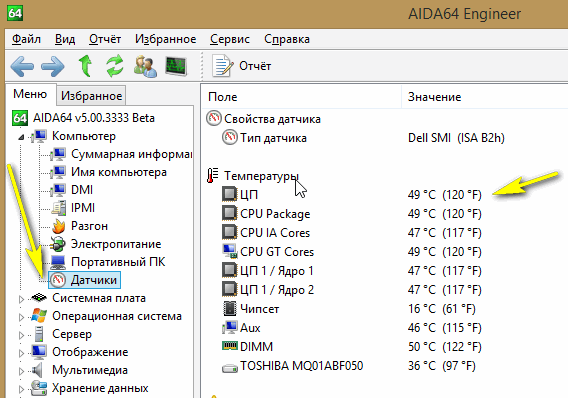
AIDA64 - processor temperature 49gr. C.
How to find out what temperature is critical for your processor, and what is normal?
The easiest way is to look at the manufacturer’s website, this information is always indicated there. It is quite difficult to give general numbers for different processor models.
In general, on average, if the temperature of the processor is not higher than 40 grams. C. - then everything is fine. Above 50g. C. - may indicate problems in the cooling system (for example, an abundance of dust). However, for some processor models, this temperature is a normal working temperature. This especially applies to laptops where it is difficult to organize a good cooling system due to limited space. By the way, on laptops and 70 grams. C. - may be the normal temperature under load.
Read more about CPU temperature: https://pcpro100.info/kakaya-dolzhna-byit-temperatura-protsessora-noutbuka-i-kak-ee-snizit/
Dust cleaning: when, how and how many times?
In general, it is desirable to clean a computer or laptop from dust 1-2 times a year (although much depends on your premises, someone has more dust, someone has less dust ...). Once every 3-4 years, it is desirable to replace the thermal grease. Both the one and the other operation is nothing complicated and can be performed independently.
In order not to repeat, I will give a couple of links below ...
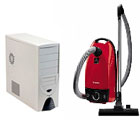
How to clean the computer from dust and replace the thermal grease: https://pcpro100.info/kak-pochistit-kompyuter-ot-pyili/

Cleaning your laptop from dust, how to wipe the screen: https://pcpro100.info/kak-pochistit-noutbuk-ot-pyili-v-domashnih-usloviyah/
PS
That's all for today. By the way, if the measures proposed above did not help, you can try reinstalling Windows (or replacing it with a newer one at all, for example, changing Windows 7 to Windows 8). Sometimes, it is easier to reinstall the OS than to look for the reason: you will save time and money ... In general, you sometimes need to make backup copies (when everything works well).
Good luck to all!
1. Question number 1 - what program is the processor loaded?What to do?
3. Question number 3 - the cause of CPU load can be overheating and dust?
1. Question number 1 - what program is the processor loaded?
What to do?
How to check it?
How to open the device manager?
3. Question number 3 - the cause of CPU load can be overheating and dust?
How to find out what temperature is critical for your processor, and what is normal?





